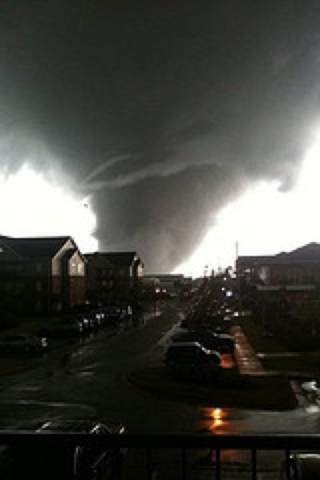The storm system that hit Alabama was one of the deadliest, costliest and most widespread tornado outbreaks ever to hit the United States, according to Patrick Marsh, the National Weather Service liaison to the Hazardous Weather Testlab in Oklahoma City.
Storm surveys by the National Weather Service are still ongoing, Marsh said, and full details of the strength of the tornado that hit Tuscaloosa will not be known for several days.
Marsh said the tornado will likely be categorized as an EF-4 or EF-5 tornado, making it among the strongest 2 percent of all tornadoes.
“This one will rank up near the top,” he said. “Since 1950, Alabama has recorded six F-5 tornadoes, including one during the April 1974 Super Outbreak many people are comparing this week’s outbreak to. That F-5 tornado occurred in Guin, Ala., and was on the ground for over 100 miles and almost two hours.”
Comparing tornadoes, however, is not a simple process, Marsh said, as each system and funnel cloud is different.
Marsh said the system produced a large number of tornadoes, originally estimated to be more than 150. That number, however, is likely high because the tornado that hit Tuscaloosa and Birmingham is listed multiple times for hitting different areas, he said.
Bill Keller, a retired professor of journalism at the University of Alabama, said the outbreak was worse than any he’s ever seen.
“In the mid ‘70s there was a bad storm that went through Skyland Park in Tuscaloosa and some other areas,” he said. “The worst in recent memory was the one that hit northwest Jefferson County in 1998, and hit most of the same areas as this one. It took out Oak Grove High School and hit areas like Forestdale.”
Keller said what set this system apart was how widespread it was. Not only did one major tornado hit Tuscaloosa and Birmingham, others hit Huntsville and Cullman.
“I don’t ever recall a storm system like this,” he said. “There were tornadoes all over Alabama. There were as many people killed in DeKalb County as there were in Tuscaloosa.”
Marsh said the outbreak is being compared most often to the 1974 Super Outbreak and an outbreak on May 3, 1999, in Oklahoma, in which an F-5 tornado hit Oklahoma City and caused extensive damage. That outbreak produced 74 tornadoes in Kansas and Oklahoma, killed 46 and caused more than $1.5 billion in damage, according to the website of the National Severe Storms Laboratory.
“By my estimation, the April 27 outbreak will easily surpass the May 3, 1999, outbreak in terms of number of tornadoes, intensity of tornadoes, and number of fatalities,” Marsh said.
Outbreaks that span entire regions are not rare, he said.
“Even though major outbreaks can occur on both small and large areas, they typically encompass a large area,” he said. “The extent of this outbreak (Mississippi to the western Carolinas) is on the higher side of things, but still pales in comparison to the Super Outbreak of 1974.”
The Super Outbreak killed between 315 and 330 people across 13 states. Eighty-six people were killed in Alabama, and tornadoes mostly struck rural areas of North Alabama, including the communities Tanner in Limestone County and Hazel Green in Madison County, according to the website for the National Weather Service in Birmingham.
The New York Times reported Friday that the April 27 outbreak had killed 333 people across the Southeast, 232 in Alabama.







